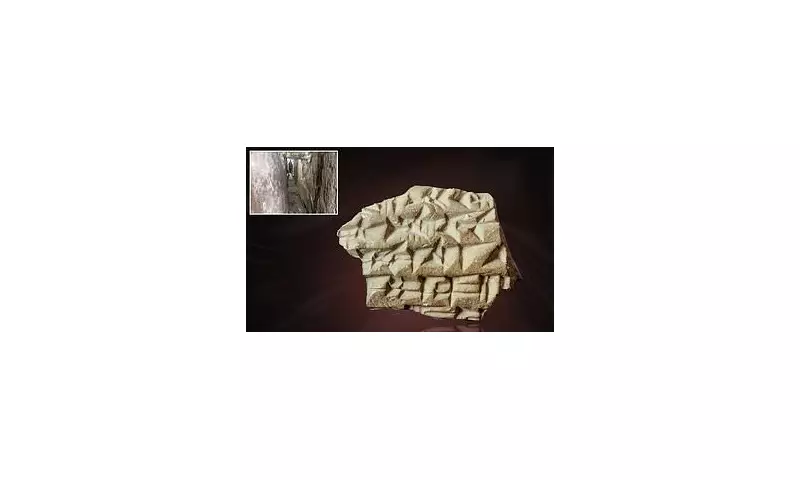
Archaeologists in Jerusalem have made a breathtaking discovery that appears to confirm a specific Biblical account from the Old Testament. A 2,600-year-old clay seal, known as a bulla, has been unearthed in the City of David, bearing the name of a royal official mentioned in the Book of Kings.
The Royal Official Emerges from Dust
The tiny clay impression, no larger than a modern coin, bears the ancient Hebrew inscription: "Belonging to Nathan-melech, the King's Servant." This remarkable find directly correlates with 2 Kings 23:11, which mentions Nathan-melech as an official during King Josiah's religious reforms in the 7th century BC.
"This isn't just another archaeological artifact," explained lead archaeologist Dr Yiftah Shalev of the Israel Antiquities Authority. "We're holding tangible evidence of a person who walked these very streets during the First Temple period, a figure previously known only from scripture."
Seal's Discovery Location Adds to Significance
The bulla was discovered during excavations at the Givati Parking Lot site in Jerusalem's City of David National Park. What makes this find particularly significant is its context - found within the remains of a large public administrative building that was destroyed during the Babylonian conquest of Jerusalem in 586 BC.
The archaeological evidence paints a vivid picture:
- The seal was found in a structure dating to the First Temple period
- It was discovered alongside other administrative artifacts
- The building showed clear signs of violent destruction
- Artifacts were preserved beneath the destruction layer
Biblical Account Matches Archaeological Evidence
According to the Biblical narrative, Nathan-melech served as an official under King Josiah, who reigned from 640-609 BC. The scripture specifically mentions Nathan-melech in connection with temple reforms, stating he had a chamber near the temple where horses dedicated to sun worship were kept before being removed by Josiah.
Professor Yuval Gadot of Tel Aviv University emphasised the importance: "Finding a seal with the exact name mentioned in the Bible, from the precise time period, in Jerusalem - this is the kind of discovery archaeologists dream of. It provides a rare bridge between text and physical evidence."
What the Seal Reveals About Ancient Jerusalem
The bulla itself, made from local clay and impressed with a personal seal, served as an ancient form of authentication. It would have been used to seal papyrus documents, much like wax seals in medieval Europe. Though the organic materials have long since decayed, the fired clay seal survived the centuries.
The discovery adds to growing evidence of Jerusalem's sophisticated administrative system during the First Temple period. It suggests a well-organised bureaucracy capable of managing temple affairs and royal decrees.
A Window into Jerusalem's Final Days
The context of the seal's discovery - within a building destroyed by the Babylonians - provides poignant insight into Jerusalem's final days before the exile. The layer of destruction preserved these artifacts much like Pompeii preserved Roman life, offering a frozen moment in time.
This discovery joins other significant bullae found in the area, including those bearing names of other Biblical figures, gradually building a physical timeline that corresponds with Biblical accounts of ancient Jerusalem's royal administration.





